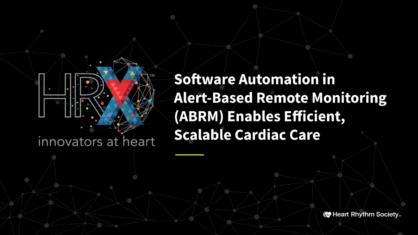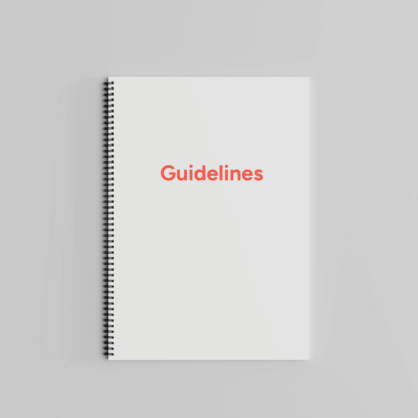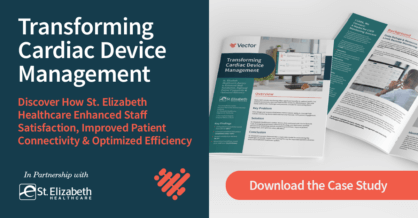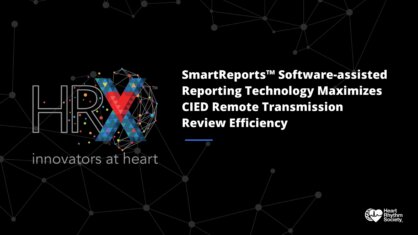Wellstar Case Study: Overcoming Staffing Challenges

The Healthcare Staffing Crisis Hasn’t Subsided – But it Can Be Managed
The staffing shortages in healthcare have been steadily growing and have reached a crisis in a post-pandemic world. While there aren’t any magic fixes, there are opportunities for hospitals and clinics to find long-term solutions.
Clinics were already struggling to meet staffing needs in the years leading up to the pandemic. COVID stretched healthcare systems to their breaking point and turned an already challenging situation into a crisis. Nursing staff and frontline workers are stretched thin and have been leaving the healthcare industry in droves.
This is a particularly hard challenge for clinics and healthcare administrators when digital healthcare specialists like cardiac device technicians leave – because they have specialized training and skill sets that are difficult and costly to replace.
How can we solve this dilemma and minimize the burden on nursing and frontline healthcare staff? This post will analyze healthcare staffing challenges before and after the pandemic, and propose how tech-based solutions can help mitigate the current staffing crisis in healthcare.
The Progression of Healthcare Staffing Challenges, Pre-COVID, and Post-COVID
Healthcare clinics were already understaffed before the pandemic. COVID accelerated an ongoing trend by exacerbating the burden on healthcare personnel.
There were a few factors already at play when the pandemic escalated the healthcare staffing shortage. One-third of the current nursing workforce will hit retirement age in 10-15 years, leading 700,000 nurses to age out of the labor pool by 2024.
At the same time, more Americans are aging and arriving at the point when they’ll retire and need in-home care. By 2030, one-in-five Americans will be age 65 or older.
What this amounts to is that irrespective of COVID, there will be more people in need of healthcare, and fewer people around to offer it. The pandemic just intensified an already bad situation. A 2022 report from MedAxiom projected a 200,000 deficit in nurses in 2019 and 500,000 in 2025.
How the Healthcare Worker Shortage Impacts Patient Care
It isn’t just that healthcare workers are leaving – they’re also becoming harder to replace.
More nurses, frontline healthcare workers, and cardiac monitoring specialists are leaving the industry at a time when the need for them is increasing. COVID created an increased demand for care, while also adding to the strain on frontline healthcare workers. The months and years following the pandemic were marked by burnout (in some cases leading to early retirement or career changes), overburdened healthcare staff which can compromise patient safety, and suboptimal planning as hospitals and clinics became overloaded. As a result, nurses and technicians have been leaving salaried positions for higher-paying, short-term traveling contracts, leaving clinics and hospitals short-staffed.
The advertised pay rate for travel nurses climbed 67% from January 2020 to 2022 according to the American Hospital Association. At the same time, the replacement costs for healthcare workers sit at $28,000-$51,000 per year.
What does this all mean for patients? For one thing, it means a lack of individualized care as existing on-call nurses have to split their limited time and attention between more patients. Frontline workers and technicians are already struggling with burnout, which can potentially lead to a higher rate of malpractice deaths due to exhaustion.
What Strategies Can Cardiology Clinics Use to Survive the Staffing Shortage in Healthcare?
The shortage of nurses and techs in healthcare is likely to get worse before it gets better. Yet despite this, 41% of healthcare businesses have made no changes to their hiring plan and proceed with operating a “business as usual” HR strategy.
Thankfully, there are solutions to this crisis. The Center for Disease Control offers guidance on how healthcare facilities can deal with staffing shortages despite declining staff and rising patient numbers. Some of these include:
Having a Contingency Staffing Plan
When there are more patients to go around than there are nurses and staff to attend to them, cardiology clinics can do more with less. The CDC recommends adjusting staff schedules, rotating personnel positions, and suspending non-essential procedures and visits so healthcare facilities can allocate more resources to patient care.
Expanding the Training Period and Adding Economic Incentives
When replacing your staff when they leave isn’t an option, you can consider focusing on employee retention instead.
The shift in the healthcare industry away from full-time salaried positions and towards short-term travel contracts shows us that if nurses and technicians don’t feel as though their jobs are worth their mental well-being, they will leave.
You can stop that from happening by investing more in the nurses and techs who choose to stick around. Increasing compensation for healthcare workers and expanding the training period for caregivers can give them a reason to stay while setting them up for success.
Automate Patient Caregiver Tasks with Remote Patient Monitoring
Remote cardiac monitoring was designed to provide caregivers with more immediate data for optimized diagnoses and treatment. Used correctly, this data can also help clinic and hospital administrators make better decisions about how to distribute resources and staff. However, many clinics are struggling with the opposite: the data from these systems is increasing workloads and creating a need for more staff.
Software solutions can help relieve the operational burden placed on healthcare personnel. Technology isn’t intended to completely replace trained staff, but it can automate and remove some of the non-clinical tasks allowing for those roles to work to the level of their license. This gives nurses and techs more personal and professional satisfaction while reducing the overall workload. Additionally, supplementing software with third-party service that acts as an extension of the team can further relieve clerical burdens and allow clinics to maintain a consistent level of care and even improve it.












![Navigating Remote Monitoring In An Evolving Cardiac Care Landscape[62]](https://vectorremote.com/wp-content/uploads/2024/11/Navigating-Remote-Monitoring-in-an-Evolving-Cardiac-Care-Landscape62-418x235.png)

